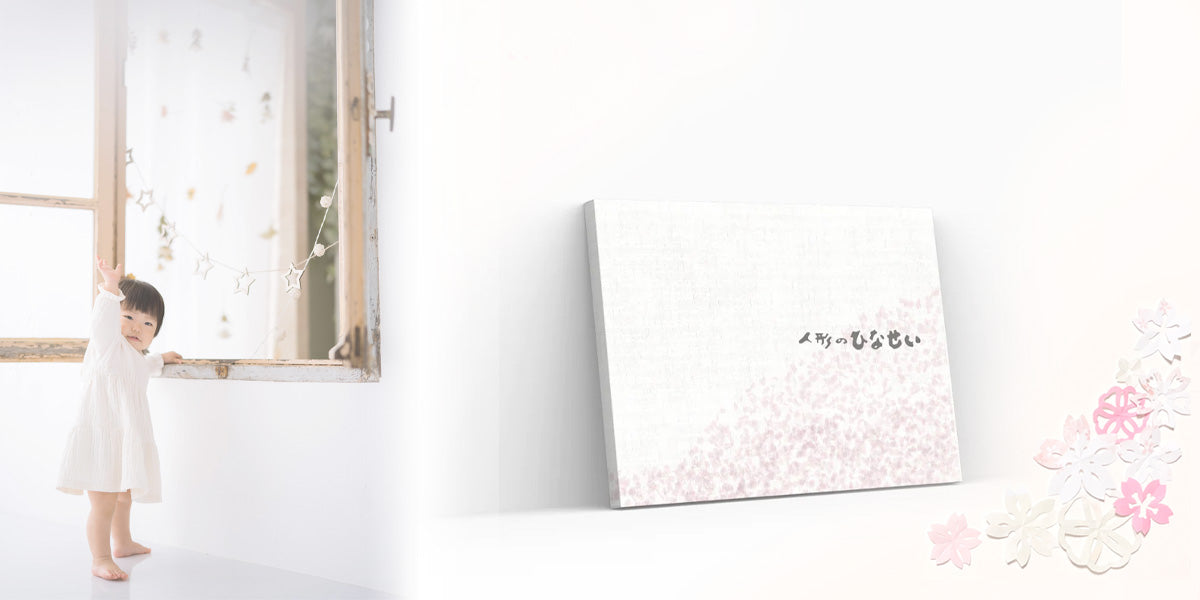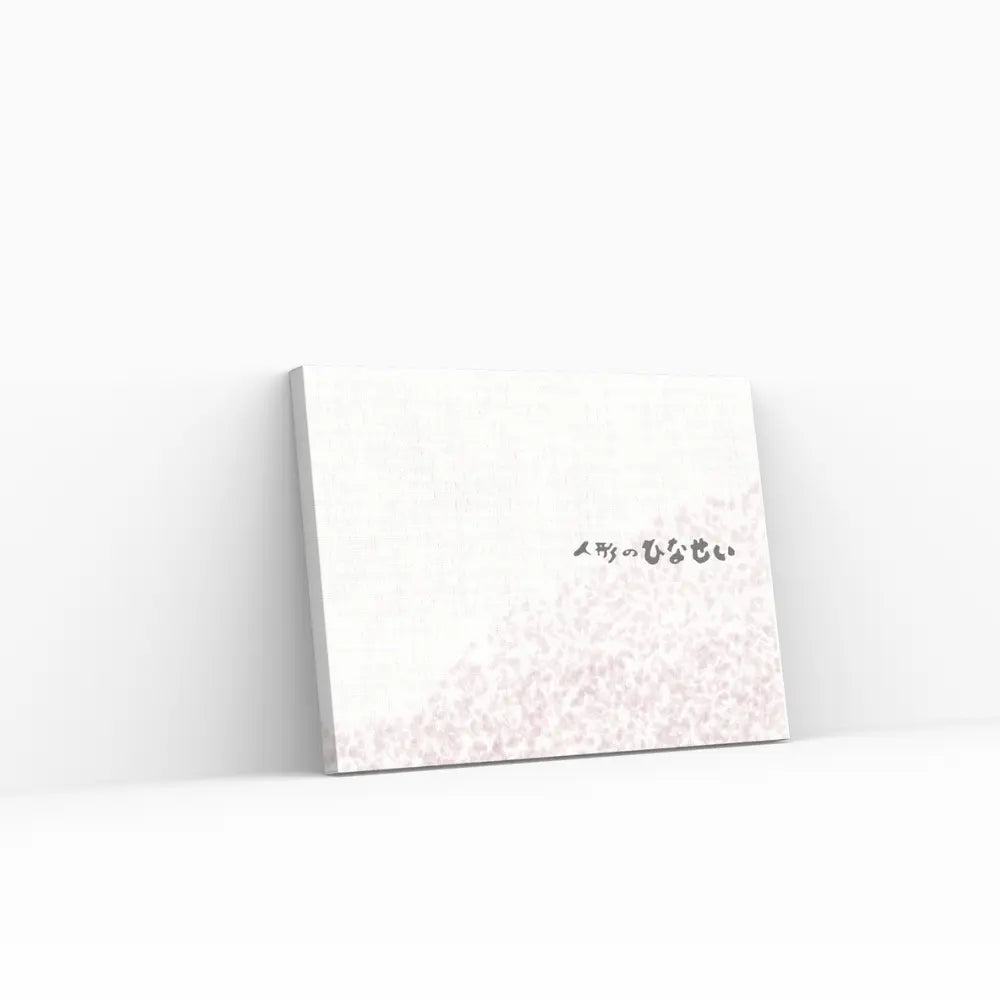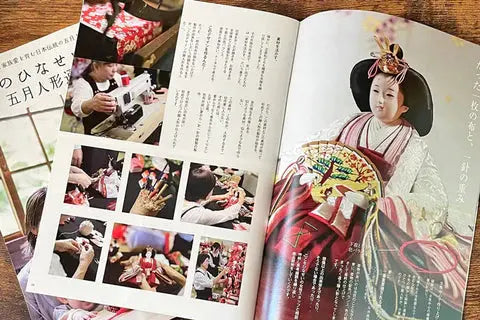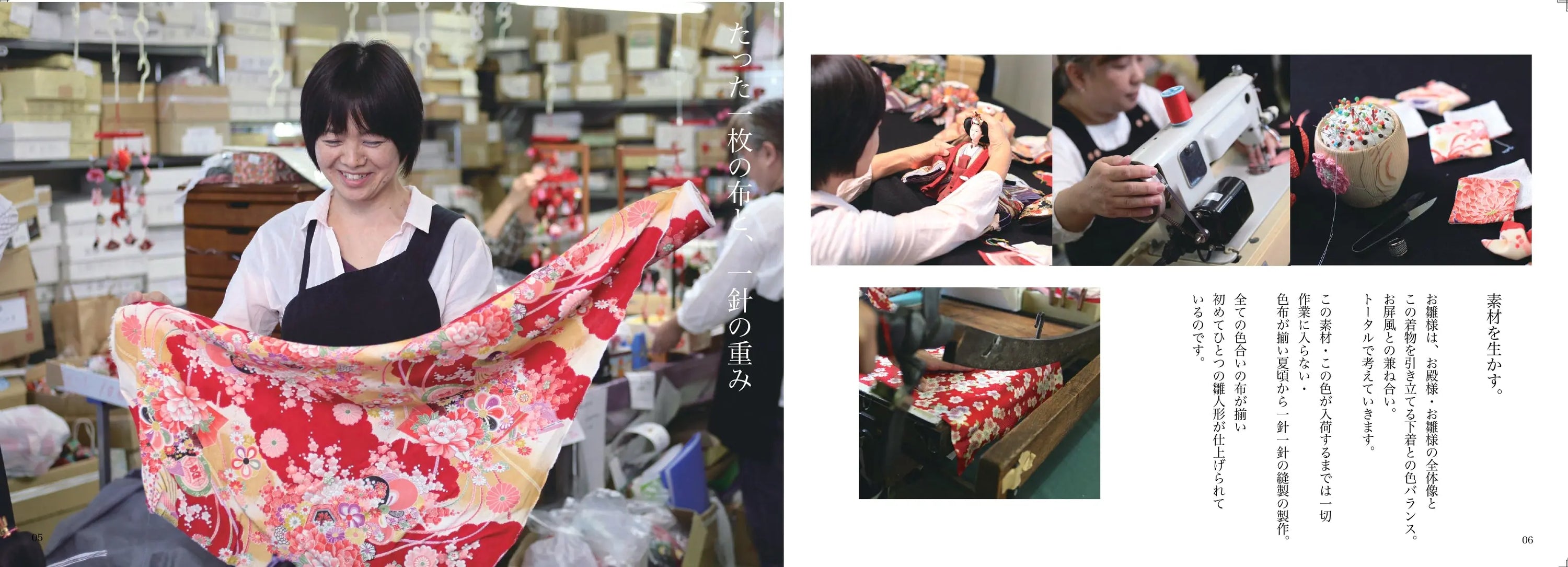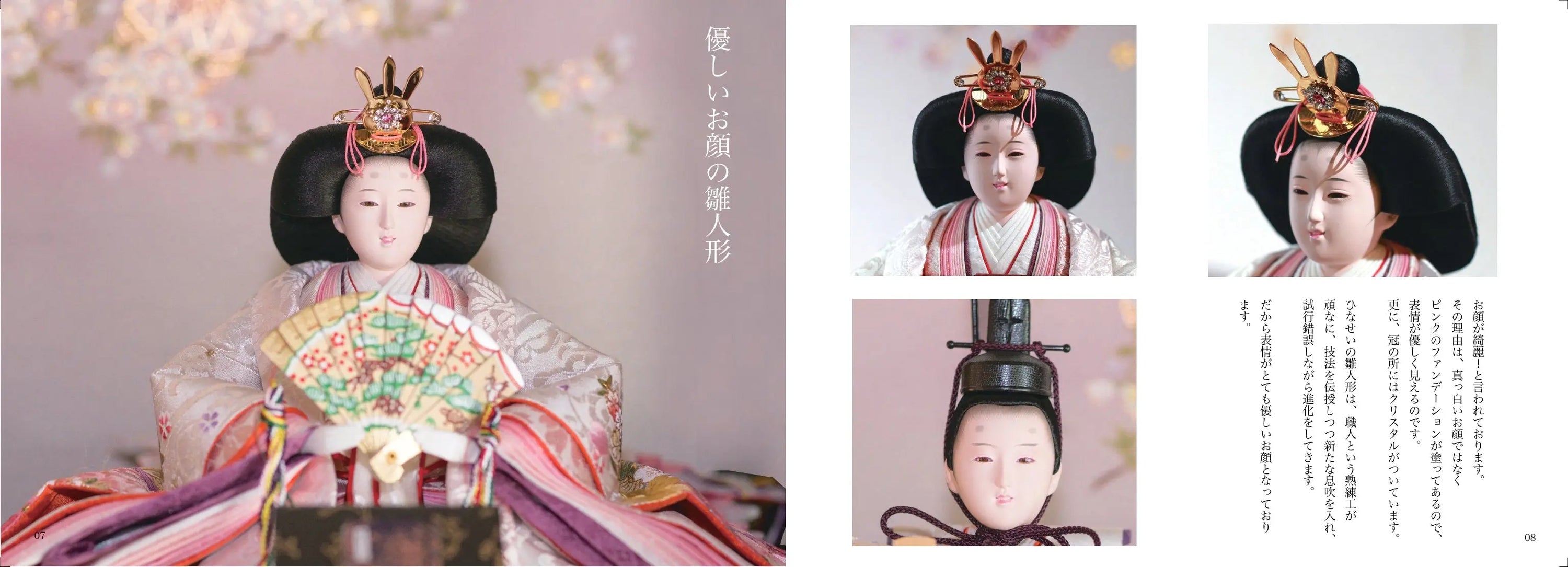What is the conclusion of the question, "Are the Hina dolls and the Emperor a couple?"
Are the "Ohinasama" and "Odairi-sama" a married couple? Or not? Which is it?
Ohinasama (hina dolls) are a set of dolls that represent the "ceremonial celebration of the wedding banquet of the court nobility and imperial family."
There are three ladies-in-waiting who look after the princess and five musicians in the musical band.
When we say "Ohinasama" to refer to the entire Hina doll set , they are not a married couple.
However, when we say "O-Iri-sama," we are referring to both a male and female doll, so they are clearly a married couple .
On this page, I would like to explain everything about Hinamatsuri dolls.
If you found this helpful, I would appreciate it if you could "share" it.

---- table of contents ----
Click below to jump

1. Are the Hina dolls and the Emperor a couple? Solving the mystery of Hinamatsuri
The Hina dolls and the Emperor dolls are the most eye-catching of the dolls displayed during Hinamatsuri.
They are placed at the top of the stage and many people think they are a married couple.
However, the actual background is a little different. The word "O-Narisama" originally referred to a noble person such as an "emperor" or "empress ."
The idea of viewing the male and female dolls in Hinamatsuri as a married couple is influenced by modern thinking.
The word "ohinasama" itself often refers to the entire Hina doll family, and does not necessarily refer to a strictly marital relationship.
Traditionally, Hinamatsuri is an event to pray for the healthy growth and happiness of girls, and the Hina dolls are a symbol of this .
The male and female dolls displayed on the top tier of Hina dolls represent wishes for family happiness and peace.
Nowadays, it is sometimes recognized as a symbol of marriage, but its original meaning was much broader.
By understanding the deeper meaning behind the Hinamatsuri dolls, you will be able to enjoy the tradition even more while feeling the family bonds and happiness.
2. What is the origin of Hinamatsuri dolls? Explaining the difference between the Emperor and Empress dolls
The dolls displayed during Hinamatsuri are imbued with history and deep meaning.
The Hinamatsuri festival dates back to the Heian period and has its origins in the "Hina-asobi" (doll-playing) that was held at the Imperial Court.
At first it was a ritual to play with small dolls, but the custom of displaying dolls gradually spread, and it has evolved into its current form.
The Emperor and Empress refers to a pair of male and female dolls.
Many homes display these dolls as a symbol of marriage, but originally they represented noble men and women of the imperial court.
The word Ohinasama often refers to the entire Hina doll collection, but can also refer specifically to the male and female dolls.
Hinamatsuri, also known as the Girls' Festival, is a day to pray for the healthy growth and happiness of girls.
Hina dolls are meant to ward off misfortune and pray for the healthy growth of children.
Even for modern families, Hinamatsuri has been passed down as a wonderful event that deepens family bonds.
3. Are the Hina dolls a married couple? What is the meaning behind the dolls of Hinamatsuri?
The Hina dolls displayed during Hinamatsuri are often seen as a married couple , but in reality they are much more than that.
Hinamatsuri is an event to pray for the growth and happiness of girls, and Hina dolls are displayed as a symbol of this.
The male and female dolls displayed on the top tier of the stage are modeled after aristocratic weddings from the Heian period, and are therefore often treated as a married couple.
However, in their truest sense, these dolls are not simply a pair of men and women, but are meant to bring happiness and peace to families .
In modern times, Hinamatsuri has come to have a stronger meaning as a symbol of marriage, but behind it, the idea of praying for the health and prosperity of the entire family remains deeply rooted.
By experiencing Japanese traditions through Hinamatsuri and cherishing the time spent celebrating with your family, you will be able to have a richer experience.
4. What is the correct way to arrange dolls for Hinamatsuri? Explaining the difference between left and right
The arrangement of dolls displayed during Hinamatsuri varies according to the region.
Particularly noteworthy is the arrangement of the male and female dolls on the left and right.
The layout differs between the Kanto region and Kansai (Kyoto), and each region has its own traditional layout methods .
In the Kanto region, it is common for the male doll to be placed on the left and the female doll on the right .
This comes from the positioning of the bride and groom at modern weddings.
In contrast, in the Kansai region centered around Kyoto, the traditional arrangement of male dolls on the right and female dolls on the left is based on the position of the Emperor.
Historically, the Emperor has stood on the right, and this custom has been carried over to the Kyoto-style Hinamatsuri.
When it comes to the question of which is correct, it is most important to respect regional differences.
Nowadays, they are often arranged freely according to family preference and local tradition, and there is nothing wrong with either choice .
The important thing is that by displaying Hina dolls, families can enjoy the tradition together and pray for happiness.

5. We will explain the correct arrangement of Hina dolls displayed at the Girls' Festival.
The Girls' Festival , or Hinamatsuri, is a traditional Japanese event that prays for the growth and happiness of girls .
The arrangement and placement of the Hina dolls displayed on this day has important significance.
On the top tier of the stage are a male and female doll , followed by three court ladies and five musicians .
This arrangement is said to be a reproduction of a wedding ceremony held in the ancient imperial court.
Although the way the Hina dolls are arranged varies from region to region, the order in which they are arranged from top to bottom is basically the same.
The top tier is decorated with a male and female doll, which are considered to be symbols of marriage, and below them are three court ladies who are in charge of looking after the women.
Next in line are the "Five Musicians in charge of the music."
These arrangements represent the life of the imperial court during the Heian period , and Hinamatsuri also plays a role in conveying the noble lifestyle and culture of that time.
Decorating the decorations as a family while cherishing this traditional arrangement is an act of wishing happiness for the family.
In order to pass on Japan's beautiful culture to the next generation, let's be mindful of how the Hina dolls are arranged and have fun preparing them.
6. What is the Emperor and Empress? Explaining the role and meaning of the dolls displayed during Hinamatsuri
Among the Hina dolls displayed during Hinamatsuri, the Emperor and Empress is particularly important.
The Emperor and Empress are a pair of dolls, one male and one female , lined up on the top tier of the stage, and they represent the Emperor and Empress .
Hinamatsuri is an event that inherits the culture of the Imperial Court from the Heian period, and within this tradition , the Emperor and Empress are positioned as a particularly noble figure .
Originally, the word "Odairisama" referred to the palace where the Emperor resides, or "Dairi."
As time passed, this word came to refer to the two dolls in the Hina doll set, a male and female, and today these two are generally known as "O-Narisama."
Decorating the Emperor and Empress dolls symbolizes praying for the happiness and health of family and children.
In particular, by understanding the symbolic meaning of the Emperor and Empress among the Hina dolls, you will be able to enjoy the tradition while feeling the deep cultural background of Hinamatsuri.

7. What is the meaning behind the clothing of dolls on Hinamatsuri? Explanation of male and female dolls
The clothing worn by dolls on Hinamatsuri has a deep history and meaning.
In particular, the male and female dolls displayed on the top tier are dressed in the attire of aristocrats from the Heian period , and each outfit has a symbolic meaning.
The male doll is dressed in the formal attire worn by the emperor at the time.
This attire symbolizes authority and the role of protector of the family .
On the other hand, the costume of the female chick is a reproduction of the twelve-layered kimono , the most beautiful costume worn by aristocratic women at the time.
The twelve-layered kimono symbolizes a woman's beauty and grace, as well as her important role in the home .
These costumes are still highly regarded today as being extremely beautiful.
The attire worn on Hinamatsuri is not just for aesthetic reasons, but also symbolizes traditional Japanese culture and wishes for family.
By remembering these meanings and displaying the dolls every year on Hinamatsuri, you can pass on Japanese history and culture to your children.
8. The origin and evolution of Hina dolls as seen in the Girls' Festival: What is the influence of aristocratic culture?
Hina dolls, which are displayed during the Girls' Festival , reflect the aristocratic culture that has continued since the Heian period.
This festival is held on March 3rd and is known as an event to pray for the growth and happiness of girls.
The origins of Hinamatsuri date back to the Heian period , when it first began as a ritual using dolls as a form of entertainment at the Imperial Court .
This "hina play" later developed into "hina dolls" and evolved into the modern-day Hinamatsuri .
Influenced by the aristocratic culture of the Heian period, the male and female dolls came to symbolize aristocratic weddings, and are generally displayed on the top tier of a stage.
The Doll Festival was originally an event held to ward off evil spirits and misfortune , and it became popular as a ritual to protect girls in particular.
During the Edo period , this event spread among the common people and became established as an important family event to pray for the health of girls.
In modern times, the Doll Festival is seen as an event to be celebrated by the whole family, and displaying Hina dolls has become a custom that symbolizes family ties and happiness.
By displaying Hina dolls, people can feel the culture and traditions of Japan throughout the seasons, and it is important to pass on their meaning to the next generation.
9. What is the modern Hinamatsuri? A festival to pray for the happiness of the Hina dolls and the family.
While modern Hinamatsuri still retains its traditional meaning, it has become more of an event for families to enjoy together .
The long-standing custom of the Girls' Festival is to pray for the growth and happiness of girls, but in recent years it has also come to serve as an event to deepen family bonds.
In many homes, the Hinadan display is decorated with the dolls of the Emperor and Empress, and the family uses this as an opportunity to celebrate the change of seasons .
In modern times, in addition to the traditional arrangement of dolls, the festival has taken on a new meaning: praying for the health and prosperity of the family .
In particular, the parent generation values this event as a way to pass on Japanese culture and history to their children.
Children can also enjoy time with their families while looking at the beautiful Hina dolls prepared for them, passing on fond memories to the future.
The time spent decorating Hina dolls and celebrating together as a family is something that is highly valued even in modern society.
More than just a traditional event, Hinamatsuri provides a warm moment for families to spend together and plays an important role in passing on Japanese culture to the next generation.
10. How to Choose Dolls for Hinamatsuri: Preserving Tradition and Modern Style
When choosing a doll for Hinamatsuri, the key is to preserve tradition while incorporating modern styles .
Traditional Hina dolls are known for their elaborate craftsmanship and formal attire, but in modern times a variety of designs have appeared.
When choosing a doll, it is important to first choose one that fits your family's values and the space where you will display it .
For households that cannot afford to install a large Hinadan, the Shinno-kazari (only two dolls, a male and female doll) and compact dolls in cases are popular.
In addition, modern Hina dolls often come in colorful and stylish designs , making them popular with the younger generation.
By choosing a style that suits modern interiors while still adhering to traditional costumes and arrangements, you can enjoy the atmosphere of Hinamatsuri even more in your own home.
The Hina dolls chosen by the whole family will surely become treasured memories that will be passed down for many years to come.

Traditional Hina dolls with a modern design [Kano Hina]
11. What is the meaning behind the items that the male and female dolls are carrying? The mystery of the Doll Festival dolls
The male and female dolls displayed during Hinamatsuri each have their own special possessions, which carry deep meanings.
The male doll holds a sword called a tachi and a long, thin board called a shaku .
These are replicas of those carried by emperors and noble men of the past, and symbolize the male doll's strength and role as a guardian.
On the other hand, the female chick is holding a folding fan called a hiogi , which is an item that represents beauty and elegance.
In particular, since the cypress fan was used by aristocratic women, the decorations on the female dolls indicate their nobility and important role in the household.
These possessions are not merely decorative but represent the historical background and cultural symbolism of the Hinamatsuri dolls.
Celebrating Hinamatsuri with your family while understanding these meanings will be a valuable experience in learning about Japanese traditions and passing them on to the next generation.
12. Summary: Are the Hina dolls and the Emperor a couple? Learn the truth about the Girls' Festival
During Hinamatsuri, the Hina dolls and the Emperor are often treated as a married couple, but this meaning is not necessarily fixed.
This event, which originated in the aristocratic culture of the Heian period , features a male and female doll displayed as symbols of the Emperor and Empress , but in modern times they are popular as symbols of prayers for family happiness and the healthy growth of girls .
The essence of Hinamatsuri is to spend time together as a family and pass on Japanese culture and traditions to the next generation.
Displaying dolls helps people feel closer to their families, and celebrating the Doll Festival allows people to enjoy the changing of the seasons.
Hinamatsuri is not just a traditional event, but is also cherished today as a time to be shared with family.
In summary, Hinamatsuri is an important event that allows people to learn about Japan's rich culture and pray for the happiness of their families.
By displaying the Hina dolls and Emperor dolls, you can feel the bond between family members and pass on that meaning to the next generation.

